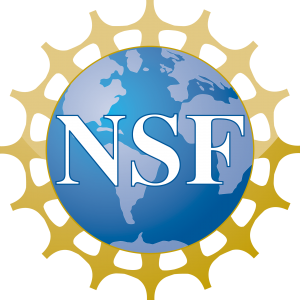 The National Science Foundation has issued a new program solicitation for High Performance Computing System Acquisition: Continuing the Building of a More Inclusive Computing Environment for Science and Engineering.
The National Science Foundation has issued a new program solicitation for High Performance Computing System Acquisition: Continuing the Building of a More Inclusive Computing Environment for Science and Engineering.
“The intent of this solicitation is to request proposals from organizations willing to serve as Resource Providers within the NSF eXtreme Digital (XD) program. The current solicitation is intended to complement previous NSF investments in advanced computational infrastructure by exploring new and creative approaches to delivering innovative computational resources to an increasingly diverse community and portfolio of scientific research and education.
NSF’s vision for Advanced Computing Infrastructure, which supports Cyberinfrastructure Framework for 21st Century Science and Engineering (CIF21), focuses specifically on ensuring that the science and engineering community has ready access to the advanced computational and data-driven capabilities required to tackle the most complex problems and issues facing today’s scientific and educational communities. To accomplish these goals requires advanced computational capabilities within the context of a multilevel comprehensive and innovative infrastructure that benefits all fields of science and engineering. Previous solicitations have concentrated on enabling petascale capability through the deployment and support of a world-class High Performance Computing (HPC) environment. In the past decade NSF has provided the open science and engineering community with a number of state-of-the art HPC assets ranging from loosely coupled clusters to large-scale instruments with many thousands of computing cores communicating via fast interconnects, and more recently with diverse heterogeneous architectures. Recent developments in computational science have begun to focus on complex, dynamic and diverse workflows, which integrate computation into all areas of the scientific process. Some of these involve applications that are extremely data intensive and may not be dominated by floating point operation speed. While a number of the earlier acquisitions have addressed a subset of these issues, the previous solicitation NSF 13-528 and the current solicitation emphasize these aspects even further.”
…
“Competitive proposals must address one or more of the following:
- Complementing existing XD capabilities with new types of computational resources attuned to less traditional computational science communities;
- Incorporating innovative and reliable services within the HPC environment to deal with complex and dynamic workflows that contribute significantly to the advancement of science and are difficult to achieve within XD;
- Introducing new, flexible, and highly usable capabilities such as cloud computing into XD to meet national-scale requirements for new modes of computationally intensive scientific research;
- Introducing new capabilities and/or reaching new communities by establishing novel, highly usable connections to other non-XD parts of the national cyberinfrastructure. For example, these might include connections to other domain-specific centers housing software, sensors or instrument data thus enabling new advances in computational science;
- Exploring new effective modes of engagement with campus cyberinfrastructure;
- Expanding the range of computationally challenging science and engineering applications that can be tackled with current XD resources. Again ease of access and usability are critical; and
- Providing reliable approaches to scientific communities needing a flexible and user friendly environment. This can be achieved in a variety of ways and the proposal should explicitly provide details on how that would be achieved by their approach.
An important aspect of the current solicitation is that hardware acquisition must provide a high degree of stability and usability by no later than January, 2016. Note, that proposals to add new and innovative features to currently deployed systems are eligible for consideration.”
Full Proposal Deadline Date: May 14, 2014









